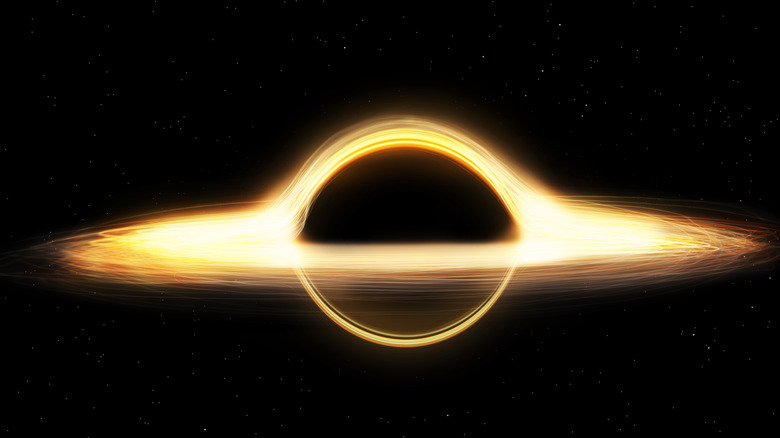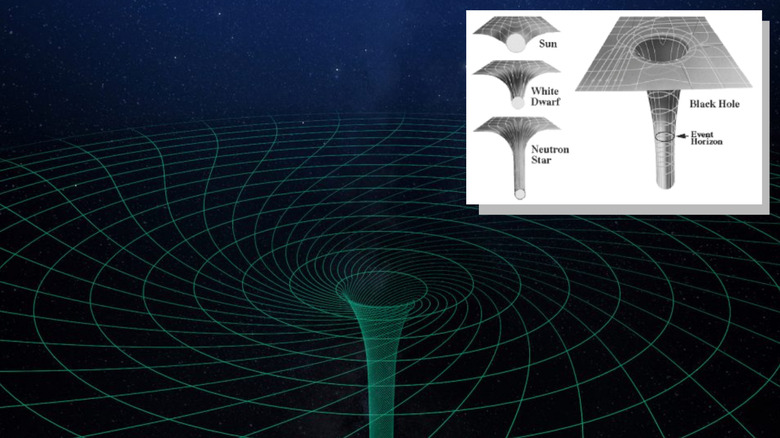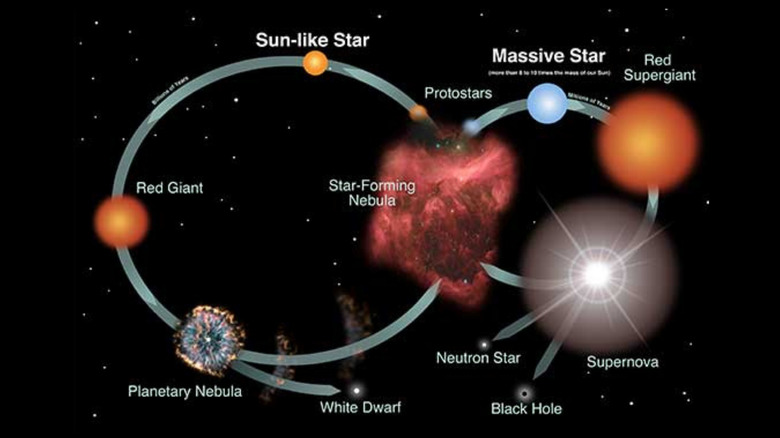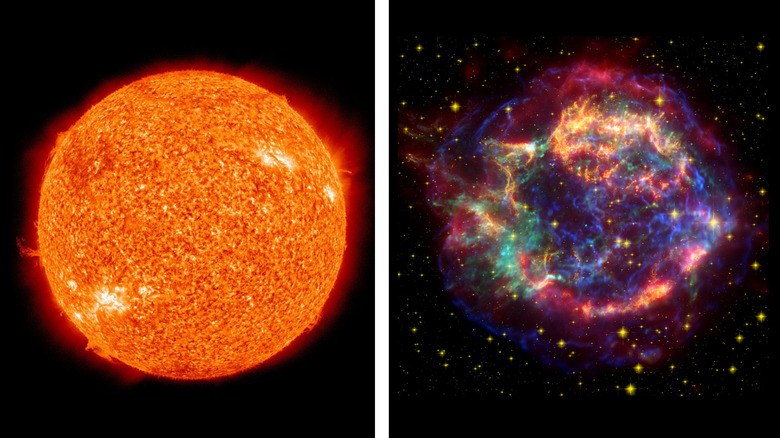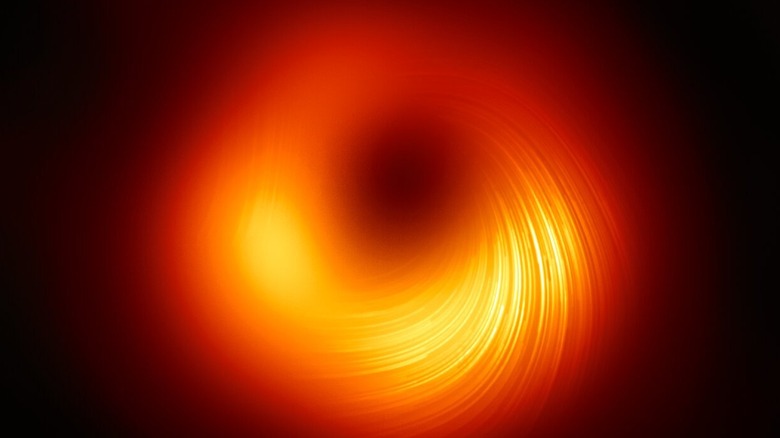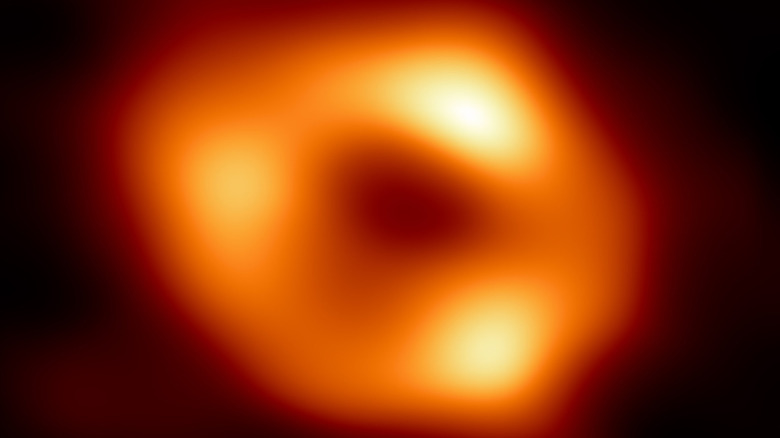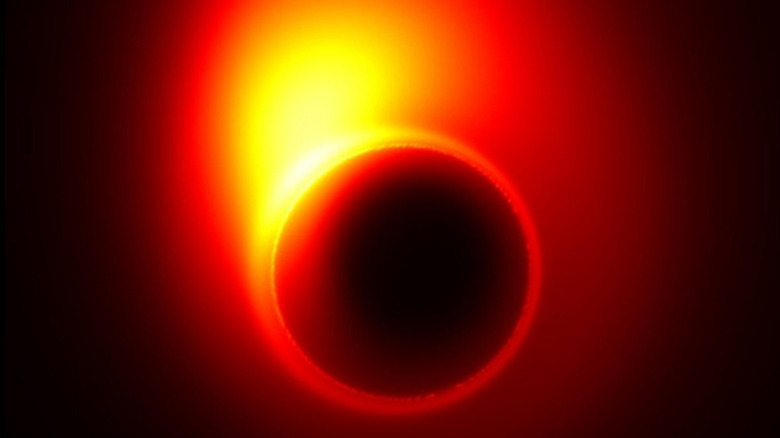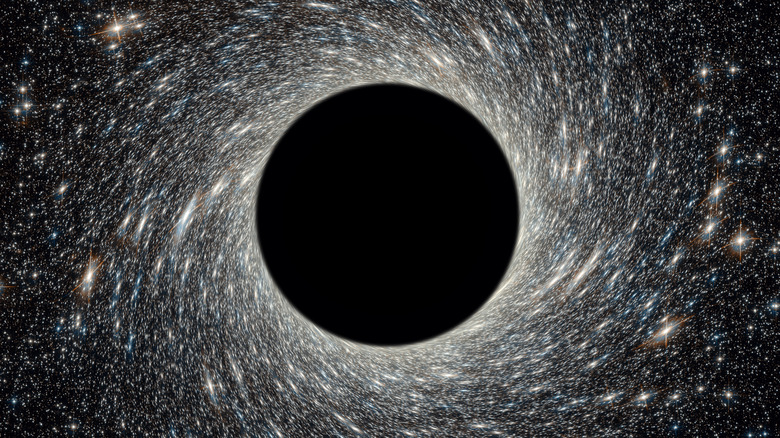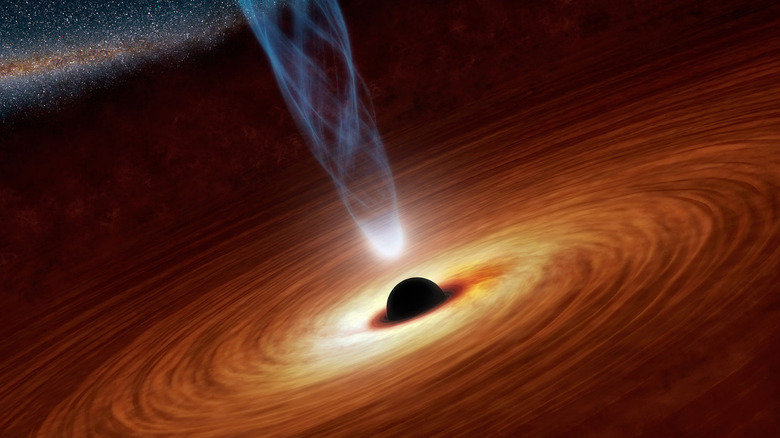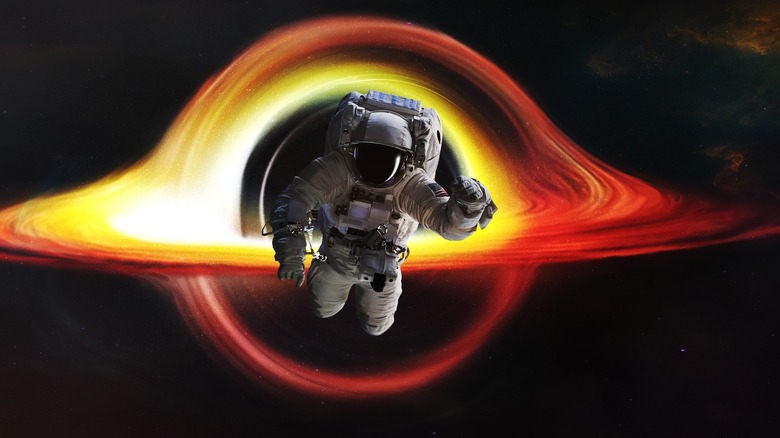10 Things We Know About Black Holes
Black holes are some of the most mysterious objects in the Universe partially due to the fact that they trap all nearby light — meaning we can never truly see them with traditional means. That doesn't mean that scientists are completely in the dark about these massive cosmic titans, however.
Since the concept of a black hole was first revealed by the solutions to the equations of general relativity, revealed by Albert Einstein in 1915, astronomers and astrophysicists have converted black holes from theory and a mere mathematical possibility to reality.
Scientists have formulated the birthing processes of black holes, learned of the characteristics that define them, and realized that supermassive versions sit at the heart of most galaxies. We even know that some of these black holes are greedily consuming matter and powering outbursts that can stretch for thousands of light-years.
In 2019, using the Event Horizon Telescope (EHT) scientists were able to capture the first direct image of a black hole — the supermassive black hole at the heart of the galaxy Messier 87 (M87). And just this year, the same collaboration topped that achievement by imaging the black hole at the heart of our own Milky Way. This image of the black hole called Saggitarius A* represents a milestone and how far we've come in our understanding of black holes. But there's still more to learn.
What is a black hole?
Black holes were first predicted by Einstein's theory of general relativity which states that mass has a physical effect on the very fabric of spacetime — the united three dimensions of space and one of time.
Before general relativity, scientists had viewed space as simply the stage upon which the events of the Universe play out. Einstein refined this, space became a player in a great cosmic production. The simplest way of understanding this is with a quote from physicist John Wheeler: "Space tells mass how to move, and mass tells space how to curve."
A good analogy for this interaction is a stretched rubber sheet upon which balls of increasing mass are placed. A basketball causes a greater dent than a tennis ball just like a star causes a greater curve in spacetime than a planet.
A black hole is similar to dropping a bowling ball on this rubber sheet. It causes a dent so deep that any object rolling by it is diverted. Technically it follows the same straight path, but the fabric upon which that moves is altered. That's akin to light being bent by black holes and other objects of tremendous mass — a phenomenon called "gravitational lensing." Passing too close to this spacetime "dent" means a one-way trip to its heart.
What this analogy tells us is that black holes aren't really "objects" — like stars or planets or even their close cousins, neutron stars — at all. It is more accurate to call them "spacetime events." Black holes only have three measurable properties, mass, angular momentum (or spin), and electric charge.
How black holes are born
The creation of a black hole is intrinsically tied to the lifecycle of very massive stars. During what is known as the main sequence lifetime of a star it is using hydrogen as a fuel for a process called nuclear fusion. Not only does nuclear fusion create heavier elements, with the fusion of hydrogen atoms creating helium, but it also creates an outward pressure that counteracts the inward pressure of gravity caused by the star's own mass.
This hydrogen can only last for so long and when nuclear fusion ceases, so does that outward pressure resulting in gravitational collapse.
As the star's core collapses, it sheds its outer layers, swelling to a red giant state. Those outer layers disperse and cool leaving a smoldering core called a white dwarf, and this is the end state for low-mass stars.
For more massive stars, however, this collapse creates enough pressure to force together helium at its core to begin fusing into heavier elements like carbon, creating enough outward pressure to halt the collapse.
Again, once helium runs out collapse occurs again, creating enough pressure to fuse heavier still elements. This process continues until iron has been created at the core of the star. Stars can't fuse elements heavier than this and a massive supernova occurs, blowing away the star's remaining outer layers and leaving behind a stellar remnant core.
For some stars, the collapse is halted when electrons and protons are forced together in the core to create a thick soup of neutron-rich matter so dense that a single teaspoon would weigh 4 billion tonnes. This creates an object called a neutron star.
For the most massive stars, even this can't prevent total gravitational collapse. These stars create stellar-mass black holes.
The sun will never be a black hole
In short, the answer to whether the sun will ever "go nova" and create a black hole, is "no." In around 4.5 billion years our star will run out of hydrogen to fuse into helium and will swell up into a red giant. Its outer layers will spread out to a distance around the orbit of Mars, consuming the inner planets — including Earth.
These outer layers will cool and spread out leaving a cooling white dwarf surrounded by a planetary nebula. And that is how the sun, and other stars of its mass, end their lives.
The dividing line governing the final fate of stars is the Chandrasekhar limit. Calculated by Subrahmanyan Chandrasekhar in 1931, this limit is considered to be 1.4 times the mass of the sun. Below this, a phenomenon called electron degeneracy pressure is enough to prevent further collapse.
There is a way for certain white dwarfs to cheat their way past the Chandrasekhar limit. A white dwarf in a close binary system with another star can drag material away from its partner — known as a donor star for obvious reasons. This can help the white dwarf to gain enough mass to exceed to Chandrasekhar limit and set it on a pathway toward becoming a more exotic stellar remnant.
With the creation of black holes described, it's time to consider their anatomies and in particular, the two singularities predicted by the general relativity that defines them.
Supermasive black holes sit at the heart of most galaxies
Not all black holes are created or exist in equal measure. In addition to stellar-mass black holes which range in mass from 3 to 10 times that of the sun, supermassive black holes exist with masses as great as millions or even billions of times the mass of our star. Mid-sized or intermediate-mass black holes also exist, but these have been notoriously difficult to spot.
The existence of supermassive black holes creates a problem for astrophysicists as there is no star that could exist massive enough to collapse and create such an incredibly massive spacetime event.
One of the most plausible mechanisms we have for the formation of supermassive black holes is the idea of hierarchical mergers. This suggests that black holes of similar sizes merge growing in process and sometimes swallowing smaller black holes.
This theory struggles to explain how supermassive black holes grow to such tremendous sizes even in the cosmic timescales that the Universe allows.
One thing we do know about supermassive black holes for sure is the fact that they lie at the center of most large galaxies.
This was stunningly confirmed in 2019 when the EHT caught an image of the supermassive black hole at the heart of the galaxy M87. Located 55 million light-years from Earth, this titanic black hole has a mass equivalent to 6.5 billion suns, This black hole is greedily consuming matter while the area around it blasts out powerful radiation in all directions.
There is black hole at the heart of the Milky Way
Named Sagittarius A* (Sgr A*) the Milky Way's supermassive black hole is considerably more diminutive than that of M87. With a mass of just 4.3 million times that of the sun, Sgr A* is less than a thousandth of the size of M87's central supermassive black hole.
Our supermassive black hole, which is 27,000 light-years from Earth, is also notable for the fact that it is not greedily consuming matter like the hole at the heart of M87.
Sgr A* consumes matter at a rate that is equivalent to a human eating one grain of rice every million years. As a result, it is mostly slumbering rather than blasting out powerful astrophysical jets like other black holes.
The smaller size of our black hole meant it was trickier for the EHT to image than that of M87, despite its relative proximity. This is because gas races around both black holes at near light speed, but because Sgr A* is much smaller it changes over a period of time shorter than the instrument is capable of observing.
Yet, despite this, earlier this year it was able to deliver humanity with its first glimpse of the supermassive black hole that has shaped our galaxy.
And Sgr A* isn't alone in the Milky Way, NASA estimates from the number of stars in our galaxy that it could be populated by as many as between ten million to a billion black holes. The reason for such a gap in estimates is at least partly due to the fact that black holes are, in themselves, invisible.
Light can't escape a black hole
Approaching the black hole from its exterior, the first singularity encountered is known as the event horizon. This isn't considered a true singularity as physicists now know it can be removed by a clever choice of coordinates.
This doesn't mean that the event horizon is trivial or unimportant in terms of understanding black holes, however. Far from it, the event horizon represents the point at which the gravitational influence of a black hole becomes so strong, that not even light can escape its clutches.
It's this light-trapping surface event horizon that makes black holes invisible to us, preventing them from emitting any light.
The concept of escape velocity is key to understanding the event horizon. This value is the square root of two times the gravitational constant (G) times the mass of the object in question, divided by its radius. This results in an escape velocity of 11,550 meters per second for Earth. This grows radically for a truly massive object which has had its radius reduced drastically. A body with a radius smaller than 2GM/c² would have an escape velocity so great that not even the speed of light in a vacuum — around 300,000,000 meters per second— would be sufficient to escape.
Black holes present such a situation. Schwarzschild radius (also known as gravitational radius) marks the inner boundary of the event horizon. For matter and energy that cross this boundary, it is a one-way trip to the real singularity of a black hole that lies at its heart.
Physics breaks down at the heart of a black hole
While a clever choice of coordinates has been enough to remove the second singularity of a black hole. Thus far there has been no success in doing the same for the central singularity. This is a problem because physicists don't like calculations that tend toward infinite as it usually indicates something is missing from a theory. That means it's wrong to think of the singularity as a physical location, rather it is the point at which mass becomes sufficient and radius small enough to result in infinite density and thus infinitely curving spacetime.
This means it is also the point at which our known laws of physics break down.
Part of the problem in addressing the singularity may come from the fact that general relativity — our best description of gravity and the Universe on large scales — and quantum mechanics — the best description we have of the subatomic world — aren't compatible.
Until we have a "quantum theory of gravity" we can't know what happens to gravity at infinitely small scales.
While we don't know much about the central singularity, and thanks to the event horizon we'll never "see it" we do know anything that passes that Schwarzschild radius will inevitably travel towards it.
Black holes don't suck
If black holes are not visible in electromagnetic radiation then it's a fair question to ask how we know they exist at all? Fortunately, these massive spacetime events have violent effects on their immediate surroundings — and we have the receipts.
This is especially true when black holes are surrounded by gas and dust. Due to angular momentum, this material is shaped into a thin wheel rotating around the black hole called an accretion disc.
Material from the accretion disc is gradually fed to the surface of the black hole and as this gas and dust are destroyed it creates highly energetic light including X-rays. This inward spiraling is due to the material losing angular momentum. As such, the common concept of a black hole sucking in everything around it isn't really accurate. It's all more of a case of matter falling to the surface of the black hole.
Matter in the disc proper is also responsible for powerful electromagnetic emissions. This is a result of the immense gravitational influence of the central black hole causing the disc to rotate at incredibly rapid speeds, heating the gas and dust and giving rise to extremely violent conditions.
Accretion discs around some black holes also give rise to a more powerful and striking phenomenon. Feeding supermassive black holes power what are known as Active Galactic Nuclei (AGN) and these are often distinguished by massive astrophysical jets that blast out from their centers.
Matter that escapes consumption by a black hole can be channeled by magnetic field lines to the poles of a rotating black hole with an electromagnetic field. From here something — possibly the rotation of the black hole — causes this matter to be blasted out at near light speeds in the form of astrophysical jets.
What would happen if you fell into a black hole
The body of an astronaut crossing the event horizon of a black hole is likely to be completely destroyed as it heads towards whatever lurks at the central singularity.
However, this intrepid — if slightly clumsy — space adventurer is likely to be very dead before even getting close to the event horizon. This is because of the powerful tidal force that is responsible for shredding stars in so-called "tidal disruption events."
As an astronaut falls toward a black hole, the part that's closest will begin to be acted upon by gravity so extreme that the body will be stretched vertically while simultaneously being compressed horizontally. This is a process called spaghettification, and it would be nowhere near as fun as it sounds.
For a stellar-mass black hole that is 40 times the mass of the sun, spaghettification would occur at about 1000 km from the event horizon which is, in turn, 120 km from the central gravitational singularity.
It may be possible, however, to fall into a supermassive black hole alive as an astronaut's increased mass may make the fatal tidal forces arise closer to the center. In any case, passing the event horizon, the astronaut would notice little aside from their environment becoming immediately and irrevocably dark.
For the astronaut's colleagues observing from a distant spacecraft, they will never even get to see their team-mate cross the event horizon. As the light from the black hole is stretched — or red-shifted — it would appear that the astronaut's fall was slowing. This effect becomes so extreme at the event horizon that the ship's crew would see the astronaut frozen at its edge, gradually dimming.
Things we don't know about black holes
One of the biggest black hole mysteries that remain is the question of what lurks in their hearts – in place of that unsatisfactory singularity. Another question we're still asking is how, why, and if a black hole can die.
Before his death in 2018, physicist Stephen Hawking proposed that black holes actually do let something "leak" into the universe and that as a result, they could evaporate. In a 1974 letter to the journal Nature entitled "Black hole explosions?" Hawking suggested that after immense periods of time for larger black holes — perhaps longer than the Universe itself will exist, or can exist — the emission of so-called "Hawking Radiation" results in a black hole ending its life in a titanic explosion.
This leaves a problem called the "Hawking Paradox" which stems from the fact that quantum physics demands that information can't be destroyed, thus something must happen to information carried into a black hole by the matter it consumes. Many suggestions have been made to explain this but none have satisfied researchers completely.
It may be the ultimate irony that one of the last lessons left to us by one of human history's greatest minds is that it's likely nothing lasts forever. Not even black holes.
